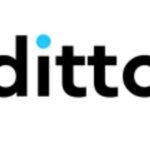GitHub is more than just a tool for developers — it’s your online project portfolio. Recruiters love it because they can see your actual work. Here’s how to use it to stand out, even if you’re a student with zero internships.
✅ Step 1: Create a GitHub Account
- Go to github.com and sign up
- Use your real name and a clean username (e.g.,
gnaneswar-web, notcool_boy_007) - Add a profile picture and bio
➤ Example:BCA Student | Web Dev Enthusiast | Exploring DevOps | Portfolio below 👇
✅ Step 2: Create a Professional README (Your GitHub Profile Banner)
GitHub allows you to add a custom README to your profile.
How to do it:
- Create a new repo with the same name as your GitHub username
- Add a README.md file
- Write about yourself, your tech stack, and pin your best projects
➤ Use Markdown and emojis to make it attractive
✅ Step 3: Upload Your Projects (Even Mini Projects!)
You can upload:
- College projects
- Personal projects (portfolio, calculator, to-do app)
- Practice assignments
- WordPress sites (just upload code + screenshots + live link)
How to upload:
- Create a new repository
- Give it a clear name (e.g.,
portfolio-site-wordpress, nottest123) - Upload files using GitHub Desktop or the web
- Add a README explaining:
- What the project does
- Tools/tech used
- Screenshot
- Live demo link (if available)
✅ Step 4: Make Your README Impressive
A good README acts like your project’s landing page. Include:
csharpCopyEdit# Portfolio Website
🔗 Live Demo: https://gnaneswarportfolio.site
🛠️ Built with: WordPress, Elementor, GitHub Pages
📄 Features: Responsive, SEO Optimized, Blog Integration
## About
This is my personal portfolio site built to showcase my web development work.
## Screenshots
[Insert image here]
## How to Run Locally
Instructions (if needed)
✅ Step 5: Pin Best Projects on Your Profile
- Go to your profile
- Click “Customize your pins”
- Choose your 3–6 best projects
These will show up first when someone views your profile!
✅ Step 6: Share GitHub Links on Resume, LinkedIn & Portfolio
Whenever you mention a project in your resume, link it to the GitHub repo.
Example:
cssCopyEditOnline Book Store [GitHub]
→ Built an e-commerce book store using HTML, CSS, and JS
✅ Step 7: Keep Your GitHub Active
- Regularly push small updates or bug fixes
- Even writing good README files and uploading code from courses counts
- Recruiters look at consistency and activity
✅ Step 8: Learn Git Basics (Optional but Powerful)
You don’t have to be a pro. Learn:
git initgit add .git commit -m "message"git push origin main
Plenty of free resources are available (YouTube, freeCodeCamp).

